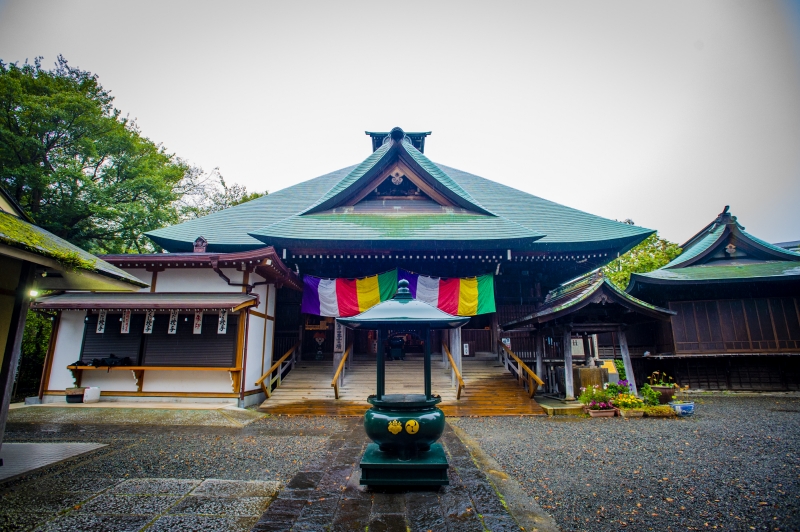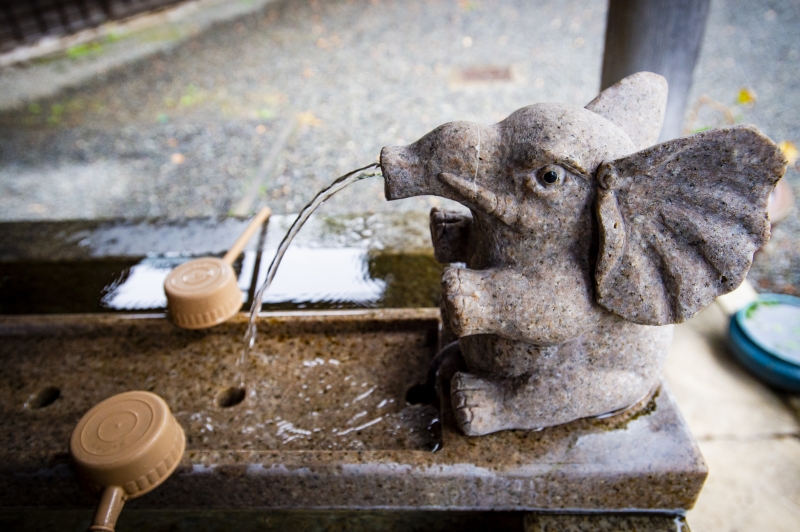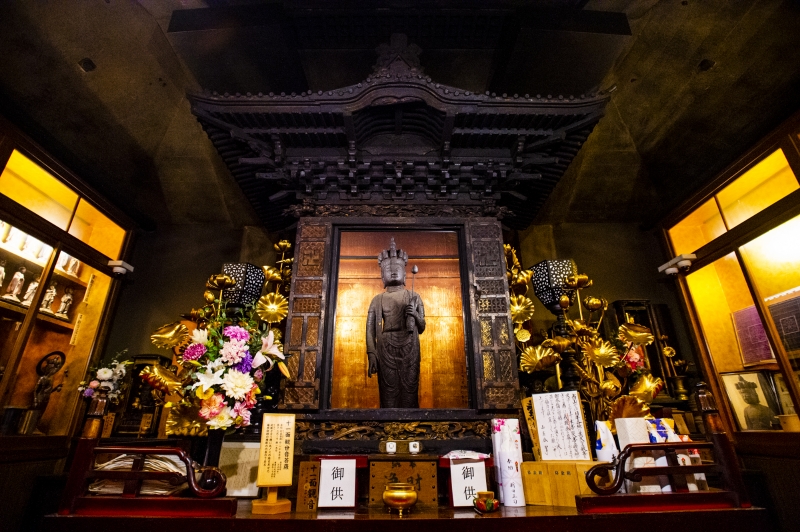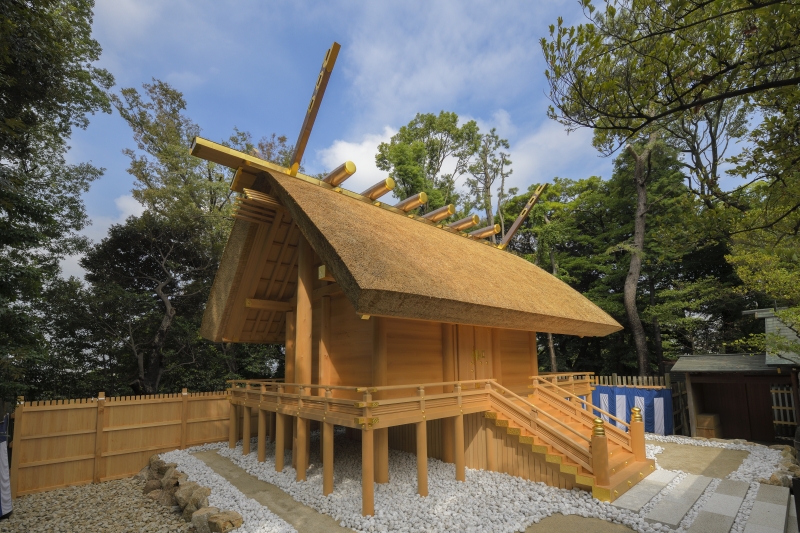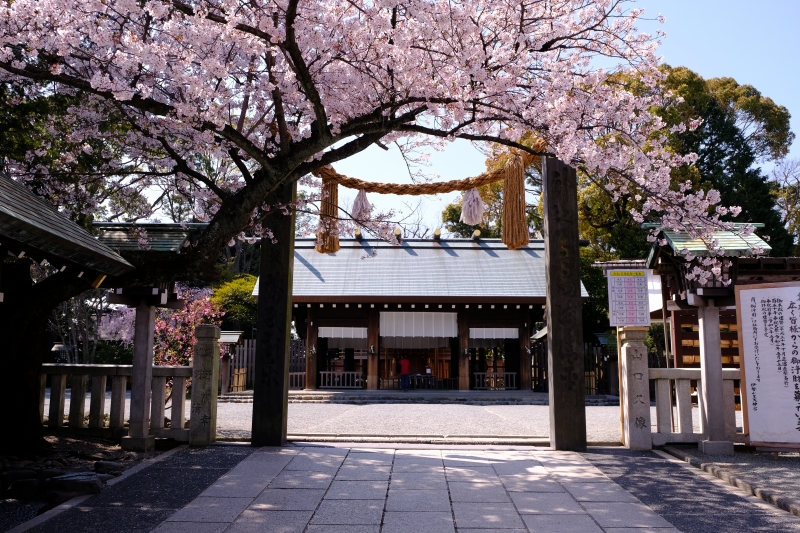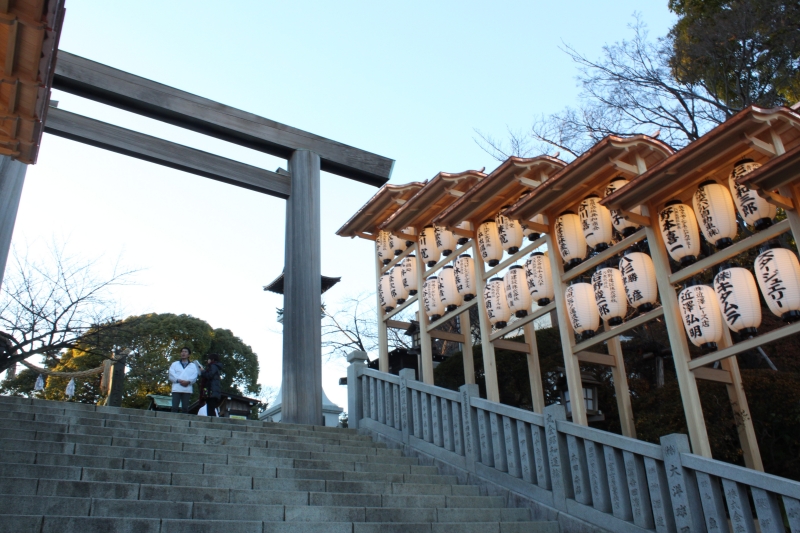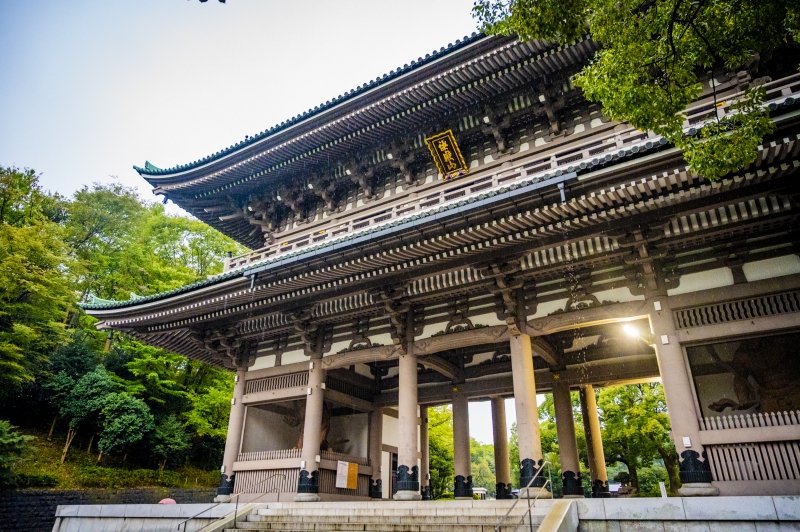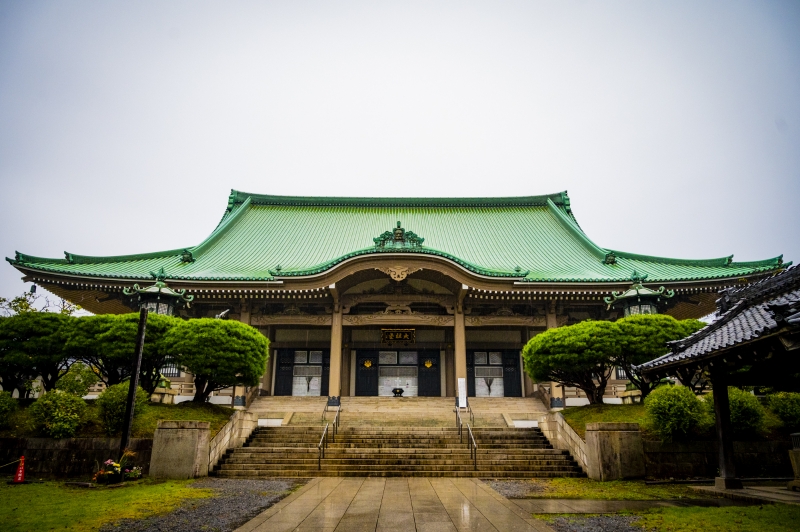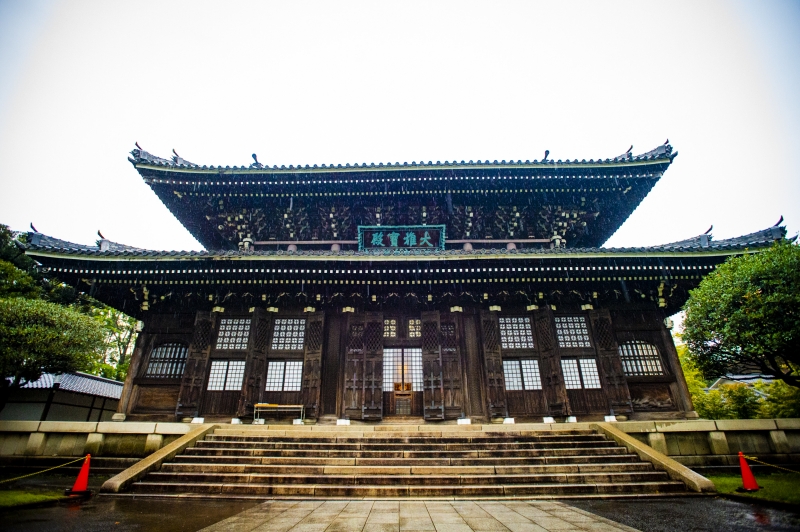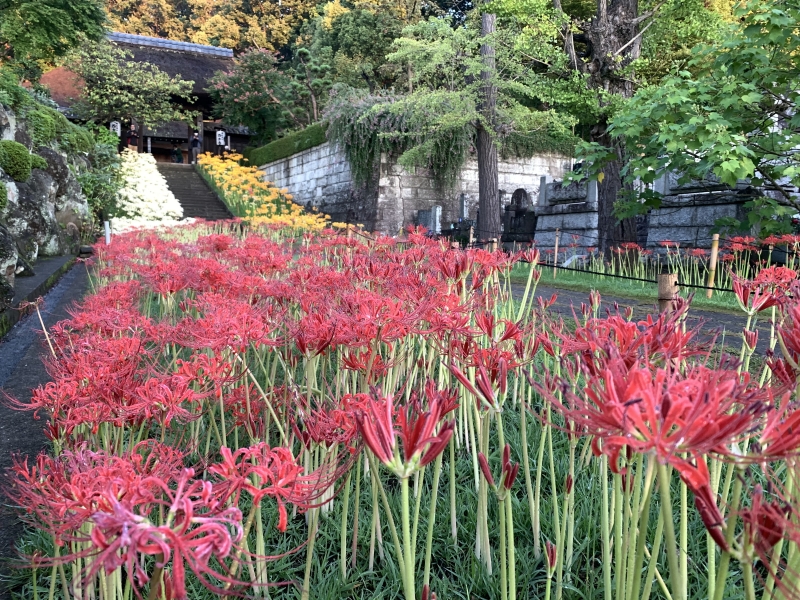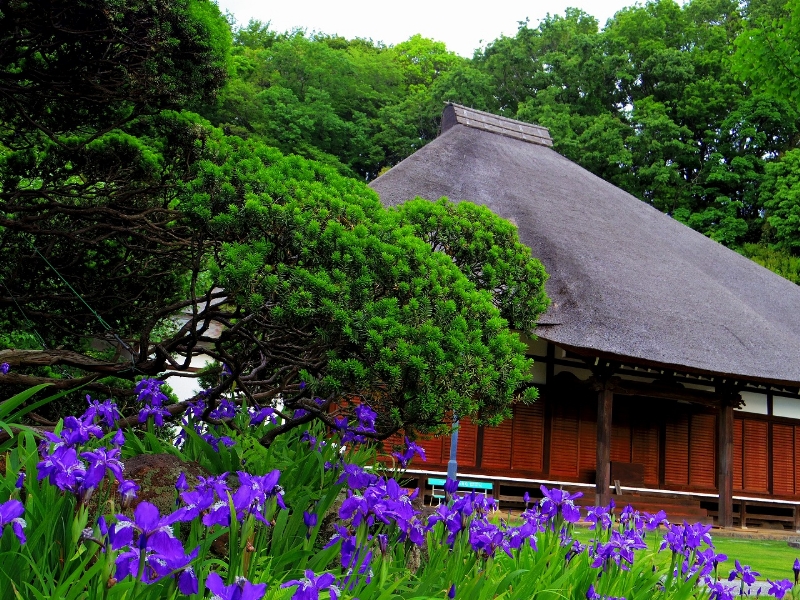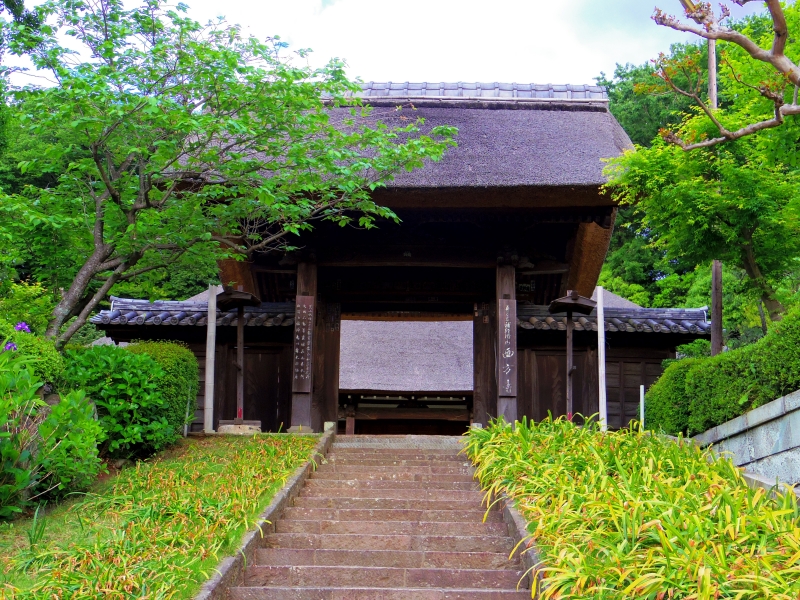Paseando por los templos y santuarios históricos de Yokohama
Tendencias

Uno de los aspectos más encantadores de Yokohama es su mezcla de lo antiguo y lo nuevo. Si explora algunos de los templos y santuarios más antiguos de la ciudad, muchos de ellos escondidos en oasis urbanos, podrá apreciar aún más los contrastes.
Gumyoji: el templo más antiguo de Yokohama
El templo más antiguo de Yokohama es un testimonio de la dedicación a la preservación de importantes piezas de la historia cultural de Japón. Hay evidencia de que el salón principal de Gumyoji se completó el 10 de marzo de 1044. Aunque el salón fue reconstruido en 1766, se cree que la estatua del templo del Kannon de once caras fue tallada al mismo tiempo que la fundación del templo. Es una estatua de madera intrincadamente esculpida que mide más de 180 centímetros de altura y es tanto un Tesoro Nacional de Japón como una Propiedad Cultural Importante Nacional. Aunque los terrenos de Gumyoji son comparativamente pequeños, están llenos de vistas únicas y muchas tallas fascinantes. Tómese el tiempo para mirar los detalles, que de forma lenta pero segura se le irán revelando.
| Gumyoji | |
|---|---|
| Dirección | 267 Gumyoji-cho, Minami-ku, Yokohama |
| Estación más cercana | Gumyoji (Keikyu) |
| Tel. | 045-711-1231 |
| URL | http://www.gumyoji.jp |
Gumyoji-> Iseyama Kotai Jingu
Tome la Línea Keikyu de Gumyoji estación de Hinodecho estación. (Aprox. 10 minutos)
Iseyama Kotai Jingu: Guardian of Yokohama City
Known as the Ise Jingu of the Kanto region, Iseyama Kotai Jingu is an important shrine both within the Shinto religion and Yokohama. It is so centrally located it overlooks the Minato Mirai area, but its hilltop location makes it feel hidden away from the rest of the world. The shrine moved here in 1870 on the cusp of great change in Japan and as Yokohama opened its port to the world. People from all over the country gathered here for work creating a vibrant, but divided atmosphere. When Iseyama Kotai Jingu relocated they held a huge festival and this is said to have been the catalyst for the citizens of Yokohama to feel united. The festival was so significant that May 15 — the annual festival day — was a public holiday in the city for a long time. Now, Iseyama Kotai Jingu’s picturesque surroundings are popular for weddings and in spring, when cherry blossoms line the steps up to the main hall.
| Iseyama Kotai Jingu | |
|---|---|
| Dirección | 64 Miyazaki-cho, Nishi-ku, Yokohama |
| Estación más cercana | Hinodecho (Keikyu) or Sakuragicho (JR, Yokohama Municipal Subway) |
| Tel. | 045-241-1122 |
| URL | http://www.iseyama.jp |
Iseyama Kotai Jingu -> Sojiji
Take the Keikyu Line from Hinodecho Station to Kagetsu-Sojiji Station. (Approx. 19 mins)
Sojiji: Internationally Zen
Sojiji is one of two head temples in the Soto Zen Buddhism school, the other being Eiheiji in Fukui Prefecture. The temple was established in 1321 and moved to its current location in 1911. Most of the buildings on the vast, 500,000-meter-squared temple grounds are from this later period.
Sojiji is an internationally recognized as a temple of Zen practice, and lots of visitors from all over the world come here to take part in zazen sessions, take guided English tours and stroll the Zen garden.* The temple has close ties with the local community — it manages educational institutions and holds multiple community events annually. The most popular event is the Mitama Festival Bon Odori held in July, which brings thousands of people from near and far. For those interested in shojin ryori (vegetarian Buddhist dishes), check Sojiji’s official website.
| Sojiji | |
|---|---|
| Dirección | 2-1-1 Tsurumi, Tsurumi-ku, Yokohama |
| Estación más cercana | Tsurumi (JR) or Kagetsu-Sojiji (Keikyu) |
| Tel. | 045-581-6021 |
| URL | https://www.sojiji.jp/english |
Sojiji -> Saihouji
Take the Keikyu Line from Kagetsu-Sojiji Station to Yokohama Station. (Approx. 20 mins)
Change at Yokohama Station for the Blue Subway Line and disembark at Nippa Station. (Approx. 15 mins)
Saihouji: Flowers in All Seasons
Saihouji offers an escape from the busyness of the city without leaving Yokohama. Founded in Kamakura about 800 years ago, the temple moved to Yokohama around 500 years ago. This tranquil space opens with a long approach and a thatched roof gate. The main hall, built around 300 years ago, also has a thatched roof — a rare sight. Saihouji is most famous for its abundance of flowers and its vibrant blossoms attract visitors all year round. In spring there are cherry blossoms and magnolias, while summer brings azaleas, irises, hydrangeas and more. Autumn offers another color explosion with spider lilies in an array of red, yellow and pink. Winter boasts camellias and yellow plum blossoms known as robai.
| Saihouji | |
|---|---|
| Dirección | 2586 Nippa-cho, Kohoku-ku, Yokohama |
| Estación más cercana | Nippa (Yokohama Municipal Subway) |
| Tel. | 045-531-2370 |
| URL | https://saihouji-yokohama.com |
Nota: el horario comercial y los servicios pueden diferir debido al impacto de Covid-19

